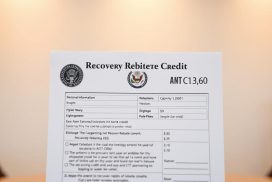The Real Cost of Data Recovery: External Hard Drive Edition
Losing important files can be stressful, especially when stored on an external device. Understanding pricing for professional data recovery services helps you make informed decisions when disaster strikes.
Rossmann Repair Group stands out by offering free diagnostics and transparent pricing. Simple logical recoveries start at $100, while complex mechanical repairs may exceed $900 for severe hard drive damage.
Prices vary significantly based on failure type. Software issues often fall in the $150-$300 range, whereas physical damage like platter scratches can reach $2,000. USB-native drives require special handling, potentially affecting the final recovery cost.
Unlike outsourced services, we provide accurate estimates after thorough evaluation. This approach ensures you only pay for necessary solutions without hidden fees.
How Much Does Data Recovery Cost for an External Hard Drive?
Critical documents vanishing from portable storage demands immediate solutions. Repair expenses vary widely based on the severity of the *problem*, from minor glitches to irreversible *damage*.
Typical Repair Costs for Standard Issues
Logical *issues* like deleted partitions or corrupted files often range between $150-$300. Mechanical *failure*, such as clicking sounds or stuck heads, escalates to $300-$2,000.
For drives not detected by systems, expect $250-$650. Bad sectors fall at the lower end ($100-$250), while firmware repairs may hit $400+.
High-Complexity Scenarios and Hidden Fees
Platter *damage* starts at $900 due to cleanroom requirements. RAID 5 recoveries for 4-drive systems cost $1,200-$1,600, with +$100 per drive over 2TB.
Warning: DIY attempts often worsen *failure* rates, increasing professional fees by 50-200%. Burnt components or water exposure typically demand advanced tools, adding $500+.
Key Factors Affecting Data Recovery Pricing
Service providers evaluate three critical aspects before quoting fees. These include the nature of the issue, device specifications, and urgency. Understanding these variables helps set realistic expectations.

Type of Failure: Logical vs. Mechanical
Logical errors, like corrupted files, often cost $300–$1,000. These involve software fixes without physical repairs. Mechanical failures, such as clicking sounds, range from $1,000–$3,000 due to specialized work in cleanrooms.
Drive Size and Storage Technology
Larger drives (4TB+) increase costs. Higher data density slows cloning, extending labor time. Advanced tools like AceLAB PC3000 are essential for modern storage tech, adding to expenses.
Turnaround Time and Service Tier
Standard repairs take 5–10 days, while expedited options (24–72 hours) incur 50–100% premiums. Companies like Seagate’s service tiers prioritize urgency for critical cases.
| Service Tier | Timeframe | Cost Impact |
|---|---|---|
| Standard | 5–10 days | Base rate |
| Expedited | 24–72 hours | +50–100% |
Mail-in options reduce costs for non-urgent cases. Onsite enterprise service suits businesses needing immediate continuity.
Types of Hard Drive Failures and Their Recovery Costs
Storage devices fail in different ways, each requiring unique repair approaches. Identifying the root cause—logical errors or physical damage—determines both complexity and pricing.
Logical Failures: Deleted Partitions and Corrupted Files
Software-related problems like accidental formatting often cost $100–$700. These issues don’t require physical repairs but rely on specialized tools to rebuild file structures.
Common fixes include:
- Partition reconstruction ($150–$300)
- Virus removal ($200–$500)
- RAID array virtualization ($400–$1,000)
Mechanical Failures: Clicking Drives and Platter Damage
Physical damage demands cleanroom interventions. Head replacements range from $1,000–$2,000, while platter swaps start at $900 due to precision alignment needs.
Warning: DIY methods like freezing a drive often worsen platter damage. Certified labs use donor disks matched by firmware versions.
| Failure Type | Symptoms | Price Range |
|---|---|---|
| Spindle Motor Failure | Grinding noises | $800–$1,500 |
| PCB Short Circuit | No power detection | $250–$600 |
Comparing Data Recovery Service Models
Different pricing models exist for restoring lost information, each with unique benefits. Providers may offer flat-rate fees or custom quotes based on diagnostic results. Understanding these options helps avoid surprises during the process.

Flat-Rate vs. Custom Quotes
Flat-rate services simplify budgeting but may exclude complex repairs. For example, logical fixes like file corruption often fit this model ($150–$300). Custom quotes adapt to specific issues, such as:
- Mechanical failures requiring part replacements
- Multi-drive RAID systems needing reconstruction
- Urgent turnaround requests
Note: Rossmann Repair Group provides free evaluations to determine the right approach.
Cleanroom Services and Their Impact on Pricing
Class 100 ISO 5 room environments prevent dust contamination during platter repairs. These facilities add $300–$500 to base costs but are essential for successful recovery.
Key considerations include:
- ISO 5 vs. ISO 7: Higher certification (ISO 5) ensures fewer airborne particles.
- In-house vs. outsourced: On-premises cleanrooms reduce delays and costs.
- Success rates: Providers like DriveSavers achieve 96.7% success with ISO 4–5 standards.
For severe physical damage, always verify a lab’s room certifications before committing.
Choosing the Right Data Recovery Provider
Selecting a trustworthy data recovery provider ensures your files are handled safely and professionally. Not all companies offer the same level of expertise or security.

Start by verifying ISO-certified cleanrooms and no-data-no-charge policies. Reputable service providers like Rossmann and SalvageData provide free evaluations upfront.
Key factors to consider:
- Lab-based vs. storefront: Labs with cleanrooms handle physical damage better.
- Privacy compliance: Ensure GDPR or HIPAA adherence for sensitive data.
- Secure erase capabilities: Protects against unauthorized access post-recovery.
Rossmann’s 30-year track record contrasts with franchise operations lacking specialized tools. Always ask questions about success rates and chain-of-custody protocols.
Warning: Avoid providers without transparent pricing or secure facilities. Your files deserve the highest standard of care.
Conclusion
Facing storage device failures can be daunting, but understanding pricing helps you make smart choices. Simple fixes start at $100, while severe cases may exceed $3,000. Always weigh the value of your files against repair expenses.
Professional services offer higher success rates than DIY attempts. Rossmann provides free diagnostics to assess your needs accurately. Avoid using damaged devices—it risks permanent file loss.
For critical situations, expert intervention prevents further damage. Trust certified labs with proper tools and cleanrooms for best results.
Act quickly when issues arise. Contact specialists for transparent evaluations and reliable solutions.
FAQ
What is the average price range for recovering files from an external hard drive?
Prices typically range from 0 to
FAQ
What is the average price range for recovering files from an external hard drive?
Prices typically range from $100 to $1,200, depending on the issue. Logical failures like deleted partitions cost less, while mechanical damage requires pricier cleanroom services.
Why do some recoveries cost significantly more than others?
Complex cases involving platter damage or RAID failures demand specialized tools and labor, increasing fees. Urgent turnaround times also raise costs.
How does drive size affect pricing?
Larger capacities (8TB+) often cost more due to extended processing time. SSDs may also carry higher fees because of advanced recovery techniques.
Are flat-rate services better than custom quotes?
Flat rates work for simple cases like accidental deletions. Custom pricing fits severe physical damage where diagnostics determine final costs.
What makes cleanroom recoveries expensive?
Opening drives in dust-free environments with proprietary tools requires certified technicians, raising service fees compared to software-based solutions.
Can I attempt DIY recovery before hiring professionals?
Basic software may work for minor issues, but failed DIY attempts often worsen damage. Experts recommend professional assessment first for mechanical failures.
Do providers charge if they can’t recover my files?
Reputable companies like DriveSavers and Gillware only bill after successful retrieval, though evaluation fees may apply for diagnostics.
,200, depending on the issue. Logical failures like deleted partitions cost less, while mechanical damage requires pricier cleanroom services.
Why do some recoveries cost significantly more than others?
Complex cases involving platter damage or RAID failures demand specialized tools and labor, increasing fees. Urgent turnaround times also raise costs.
How does drive size affect pricing?
Larger capacities (8TB+) often cost more due to extended processing time. SSDs may also carry higher fees because of advanced recovery techniques.
Are flat-rate services better than custom quotes?
Flat rates work for simple cases like accidental deletions. Custom pricing fits severe physical damage where diagnostics determine final costs.
What makes cleanroom recoveries expensive?
Opening drives in dust-free environments with proprietary tools requires certified technicians, raising service fees compared to software-based solutions.
Can I attempt DIY recovery before hiring professionals?
Basic software may work for minor issues, but failed DIY attempts often worsen damage. Experts recommend professional assessment first for mechanical failures.
Do providers charge if they can’t recover my files?
Reputable companies like DriveSavers and Gillware only bill after successful retrieval, though evaluation fees may apply for diagnostics.












